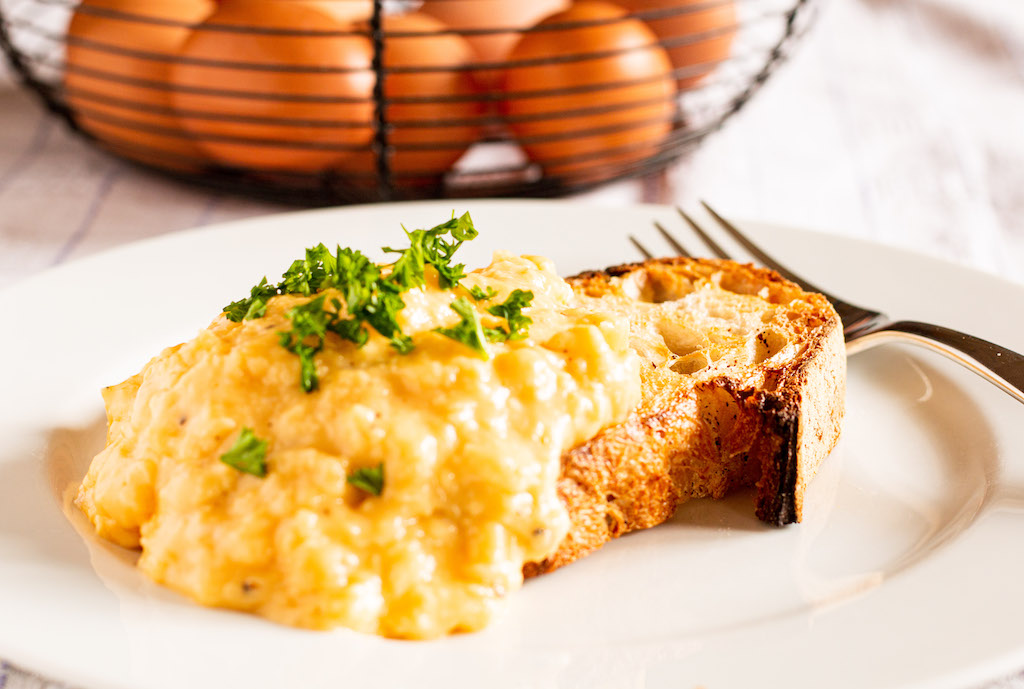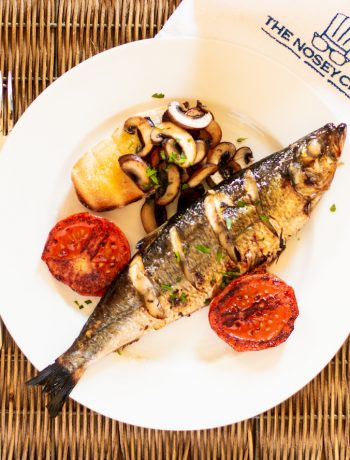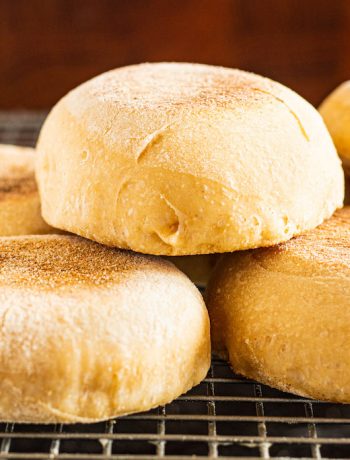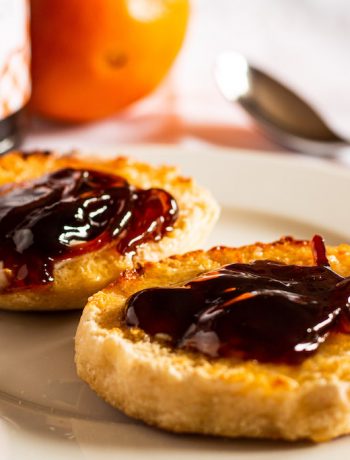One of my Twitter followers recently asked me how I cook scrambled eggs. Scrambled eggs is not really a recipe, as there is only really one, maybe two ingredients. The key thing with scrambled eggs is technique – or more specifically, heat control.
The method I use is the one that was in the Delia Smith book How to Cook – Book One. This method was, in turn, taken from the Cordon Bleu cookery school, where Mrs Smith tells us it was Lesson 1, on Day 1 of the cookery course. The school took the recipe from none other than Auguste Escoffier – the grandaddy of French cuisine.
The same basic idea pops up again with Gordon Ramsay, and this is where my experiences of eating scrambled eggs get interesting. I never order scrambled eggs in a hotel. I certainly never eat those scrambled eggs you see in a deep metal tray on a hot breakfast buffet where you can slice them cleanly with a knife because they are rubbery and over-cooked. I once had scrambled eggs in a cafe in New Mills in the Peak district that were so bad (milk had been added) that they destroyed everything else on the plate, and I just got up, and left them. The owner of the cafe came running after me to ask why I had left the food, and I had to explain, quite carefully, that her kitchen had just served up the worst scrambled eggs in all of Christendom. It was an awkward moment.
I was also disappointed by the eggs I had at the Ritz. This was, after all, Auguste Escoffier’s old kitchen – they had to be banging out the old man’s eggs perfectly, right? But no – they were over-done, and I was downcast.
The only place I have discovered to date that produces scrambled eggs consistently in the way that I enjoy them is Gordon Ramsay’s Plane Food at Heathrow Airport’s Terminal 5. There may be other kitchens doing it right, but that is the only one I have located to date – possibly because I don’t eat out for breakfast much.
So, how do I do it? There are some fundamental things that, once understood, will lead to perfect scrambled eggs every time.
First of all, we have the egg. These ought to be fresh, but freshness is not as critical for scrambled eggs at it is for a poached egg, so supermarket eggs are fine for scrambling.
The next thing is the seasoning. I never season eggs until I have cooked them. This is because I have been told that the presence of salt alters the structure of the proteins in the egg, and starts to essentially ‘cure’ the eggs before you cook them. However, Daniel Gritzer on the Serious Eats site has done an experiment on this and found that it does not make a difference. Nevertheless, I don’t let the eggs see any salt until the end of the cooking.
Next up is the egg mix. Different cooks add all sorts of stuff to the egg mix. Milk is common. Cream is sometimes used, and if you watch the Ramsay video linked above, you will even see creme fraiche. For my egg mix, I use egg. As Anthony Bourdain says in his new book Appetites, it’s about the egg – we are not making a quiche here. I start and finish the dish with butter only, and that is unsalted due to the possibly unfounded salt paranoia described above.
The last and most important thing is heat control. Where an omelette is cooked quickly, scrambled eggs are cooked slowly. There are two ways of achieving this. The first is to use the method espoused by Mr Ramsay, who cooks the eggs over a low heat, and constantly takes the pan on and off the heat to make sure nothing happens too quickly. The second method is to use a double boiler where the eggs are cooked in a heatproof bowl over a pan of hot, steaming water. In both cases, cooking is too fast if you find yourself scraping lots of cooked egg off the bottom of the pan or bowl – you are looking for the egg firming up on its own with constant stirring. Butter is added to finish – I dice this quite finely if it is fresh from the fridge because I want it to melt quickly.
The end result is softly scrambled egg. The eggs are loose, like porridge with milk added, and no part of the egg can be successfully pronged onto the end of a fork. The eggs are finally seasoned.
Scrambled eggs
Ingredients
- 2 medium hens' eggs
- 10g unsalted butter
- Sea salt and freshly milled black pepper
Instructions
Break the eggs into a jug or cup and lightly whisk the yolks into the whites with a fork.
Melt half the butter over a low heat in a small saucepan.
Add the eggs and stir gently with a wooden spoon. Cook the eggs this way and stop before they lose their looseness.
Take the eggs off the heat. Melt the remaining butter in the warm eggs, season and serve on thick, crusty toast or with croûtons scattered around.
Notes
It goes without saying that serving Scottish smoked salmon with scrambled eggs is the breakfast of kings. The quantities in the original Escoffier recipe are 6 eggs with 50g butter.



 (1 votes, average: 4.00 out of 5)
(1 votes, average: 4.00 out of 5)


2 Comments
David Leigh
08/07/2021 at 4:26 pmYour recipe is very similar to the one provided by Ian Fleming for Scrambled Eggs James Bond, in that butter is added at the end and the eggs are extremely soft. Fleming adds chives too, but I love my eggs done this way and can’t understand why almost everyone overcooks them!
Nigel Eastmond
12/07/2021 at 10:29 amChives are a nice addition. There are, however, a lot of people who do not like soft scrambled eggs. My partner included. I consider any other scrambled eggs to be dreadful. This is why I never order them in a hotel.